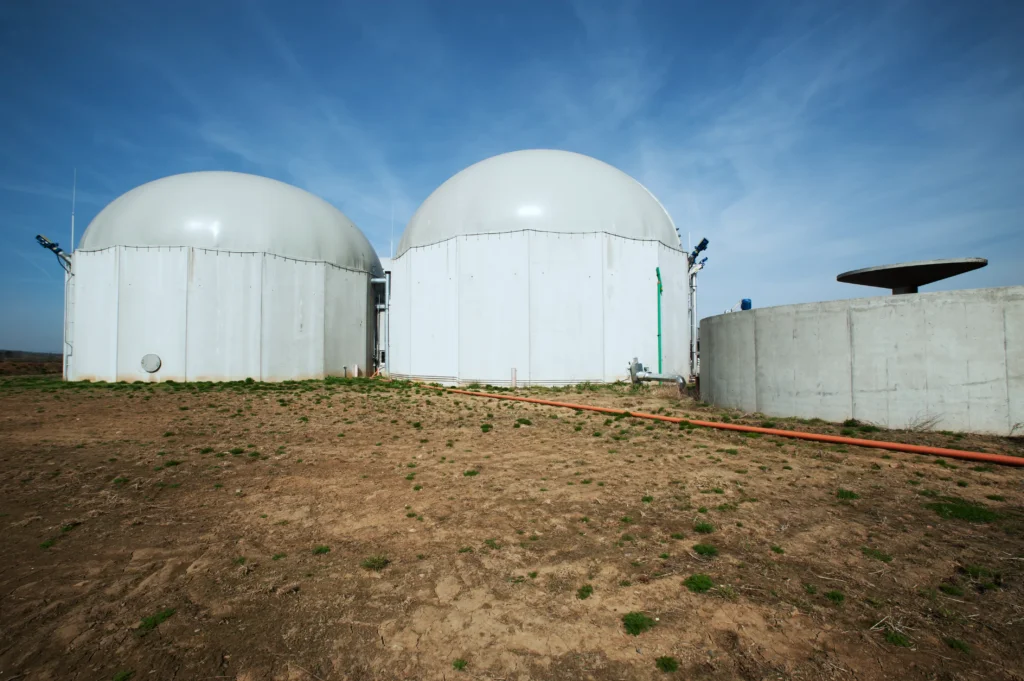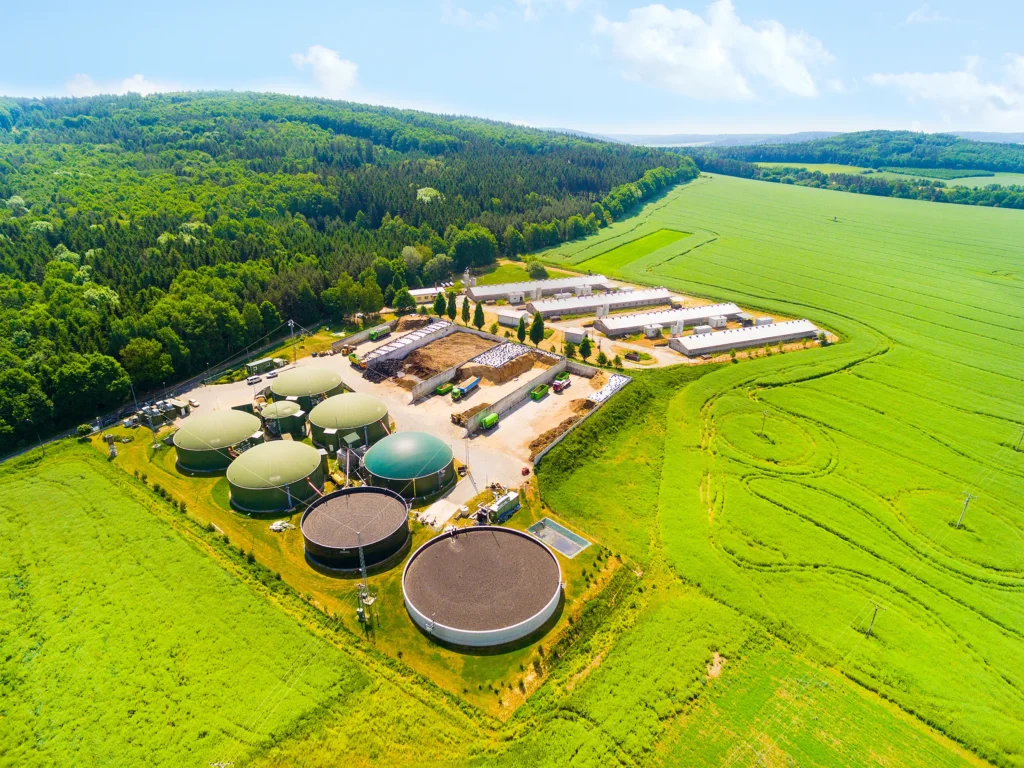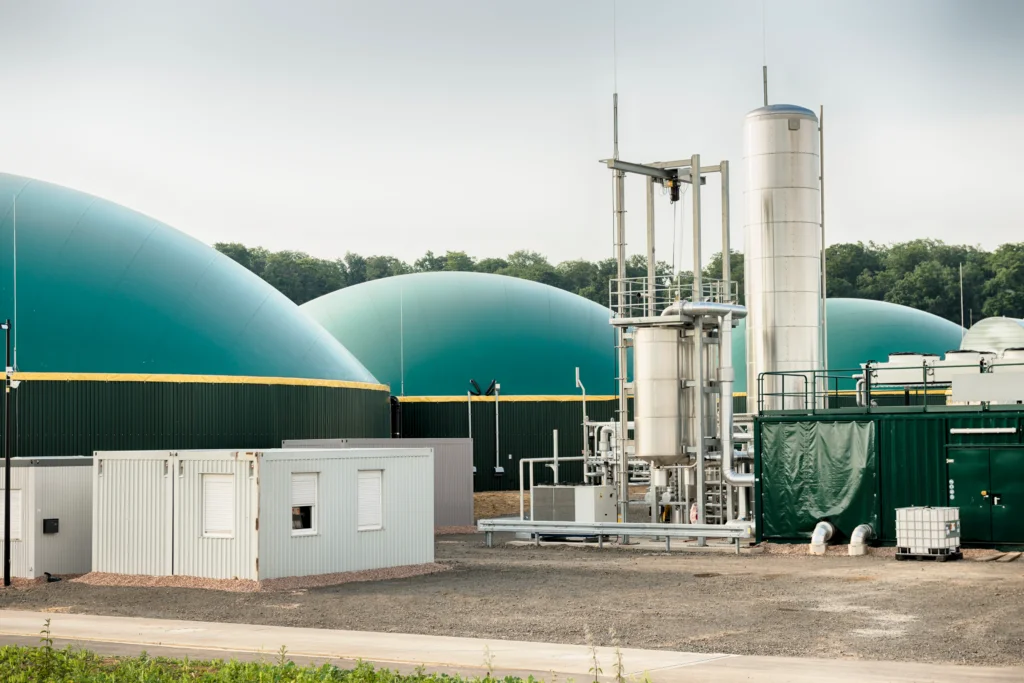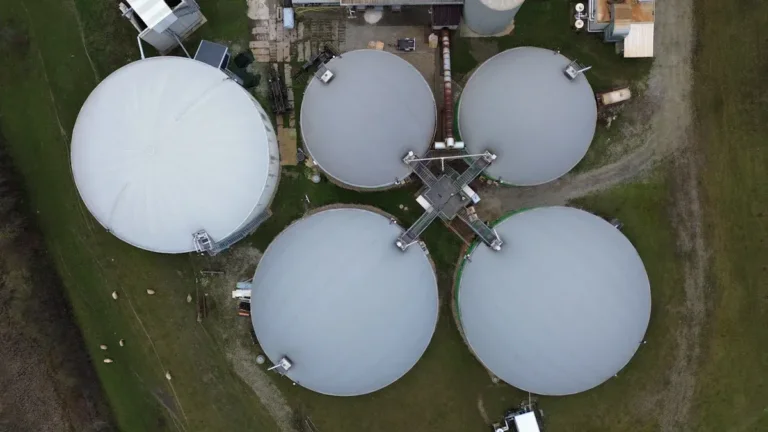Charbon actif pour biogaz
.webp)
Buy Biogas Activated Carbon
Les défis de l'industrie
Material Performance Limitations
- Adsorption Selectivity: Activated carbon exhibits non-selective adsorption, capturing CO₂ and moisture alongside target contaminants like H₂S or siloxanes, reducing effective capacity for primary pollutants.
- Pore Clogging: Particulates, oil mist, or tars in biogas physically block micropores ("pore poisoning"), diminishing surface area and adsorption efficiency over time.
Sensitivity to Operational Conditions
- Humidity Interference: High moisture levels (>70% RH) compete with contaminants for adsorption sites, significantly lowering H₂S removal performance, especially in humid climates.
- Temperature Instability: Elevated biogas temperatures (e.g., >40°C) reduce adsorption capacity and may trigger desorption of captured pollutants.
System Integration and Maintenance
- Saturation Management: Finite adsorption capacity necessitates frequent carbon replacement or regeneration, risking pollutant "breakthrough" if not timely addressed.
- Regeneration Complexity: Thermal/chemical regeneration is energy-intensive and may incompletely restore capacity or release trapped pollutants, requiring secondary treatment.
types de charbon actif apparentés
-r8fslg51nt6wgjtvh6yldxb1gtkgm3lpe0oq1akgog.webp)
- Valeur en iode : 600-1200
- Taille des mailles : 1×4/4×8/8×16/8×30/12×40/20×40/20×50/30×60/40×70 (autres tailles sur demande)
- Densité apparente : 400-700
-r8fsli0q1h9h3rr567ruiwtynlb71ht629zozuhoc0.webp)
- Valeur de l'iode : 500-1300
- Taille des mailles : 0,9-1mm/1,5-2mm/3-4mm/6mm/8mm(autres tailles sur demande)
- Densité apparente : 450-600
-r8fslbfupn0gui0p8mxgjghqhw7mjm31pdfamwrfjk.webp)
- Valeur de l'iode : 500-1300
- Maillage : 150/200/300/350 (autres dimensions sur demande)
- Densité apparente : 450 - 550
-r8fsle9da54btbwls65c8xs4a1tq6pe8prdr2qn90w.webp)
- Valeur en iode : 400-800
- Taille des mailles : 100×100×100mm/100×100×50mm (densité cellulaire personnalisée sur demande)
- Densité apparente : 350-450
- Diamètre de l'alésage:1.5-8mm

- Indice d'iode : 700-1200 mg/g
- Surface : 700-1200 m²/g
- Densité apparente : 320-550 kg/m³

- Indice d'iode : 700-1200 mg/g
- Surface : 700-1200 m²/g
- Densité apparente : 320-550 kg/m³

- Indice d'iode : 700-1200 mg/g
- Surface : 700-1200 m²/g
- Densité apparente : 300-650 kg/m³

- Indice d'iode : 700-1200 mg/g
- Surface : 700-1200 m²/g
- Densité apparente : 320-550 kg/m³

- Méthode d'activation : Activation par vapeur/gaz à haute température
- Structure des pores : Dominée par les micropores, distribution uniforme des pores
- Profil environnemental : Sans produits chimiques, faible teneur en cendres
- Applications principales : Adsorption en phase gazeuse, purification de l'eau potable

- Méthode d'activation : Activation chimique (par exemple, H₃PO₄/ZnCl₂) à des températures modérées.
- Structure des pores : Riche en mésopores, surface plus élevée
- Efficacité du processus : Temps d'activation plus court, rendement plus élevé 30-50%
- Post-traitement : Lavage à l'acide nécessaire pour éliminer les résidus

- Fonctionnalisation : Chargé d'agents actifs (par exemple, I₂/Ag/KOH)
- Adsorption ciblée : Amélioration de la capture de polluants spécifiques (par exemple, Hg⁰/H₂S/gaz acides).
- Personnalisation : Optimisation chimique pour les contaminants ciblés
- Applications principales : Traitement des gaz industriels, protection CBRN
Pourquoi vous avez besoin de notre charbon actif

Enhanced Contaminant Selectivity:
Targeted adsorption for critical biogas impurities (H₂S, siloxanes) with minimal interference from CO₂ or moisture, maximizing effective capacity.

Advanced Material Engineering:
(1) Chemically optimized impregnation ensures catalytic H₂S conversion to harmless byproducts without frequent media replacement.
(2) Tailored pore structure prevents premature clogging and maintains high siloxane/VOC adsorption efficiency.

Operational Resilience:
(1) Stable performance under high humidity (>70% RH) without pre-drying requirements.
(2) Consistent adsorption capacity across variable biogas temperatures and compositions.

Sustainable Lifecycle:
(1) Biomass-derived raw materials from renewable sources align with circular economy principles.
(2) Regenerable design extends service life and reduces waste generation.

System Integration Support:
(1) Predictable saturation indicators enable proactive maintenance scheduling. (2) Reduced backpressure in filter beds lowers energy consumption for gas transfer.
Processus et technologie
1. Hydrogen Sulfide (H₂S) Removal
Aperçu de la solution
Chemically impregnated activated carbon catalytically converts toxic H₂S into harmless elemental sulfur through oxidation. Installed in fixed-bed filters where raw biogas flows through the carbon media.

Principaux avantages
- Prevents corrosion damage to engines and pipelines.
- Maintains effectiveness in humid biogas environments.
- Eliminates toxic gas emissions during energy generation.
- Requires no chemical additives during operation.
2. Siloxane Removal
Aperçu de la solution
High-surface-area activated carbon physically adsorbs siloxane compounds through its microporous structure. Implemented in adsorption towers upstream of combustion equipment.

Principaux avantages
- Prevents abrasive silica deposits in engines.
- Extends maintenance intervals for generation equipment.
- Maintains consistent energy output quality.
- Handles variable biogas composition effectively.
3. Volatile Organic Compounds (VOCs) and Odor Control
Aperçu de la solution
Activated carbon traps diverse organic compounds and odor-causing substances via physical adsorption. Used in final polishing stages before biogas utilization.

Principaux avantages
- Removes hazardous air pollutants.
- Eliminates nuisance odors from biogas facilities.
- Improves environmental compliance.
- Enhances community acceptance of biogas projects.
4. Carbon Dioxide (CO₂) Capture for Biogas Upgrading
Aperçu de la solution
Specially engineered activated carbon with tuned pore structures selectively adsorbs CO₂ from biogas streams. Deployed in pressure swing adsorption systems for methane enrichment.

Principaux avantages
- Produces pipeline-quality biomethane.
- Utilizes sustainable biomass-derived carbon materials.
- Enables grid injection of purified biogas.
- Supports circular economy through waste valorization.

